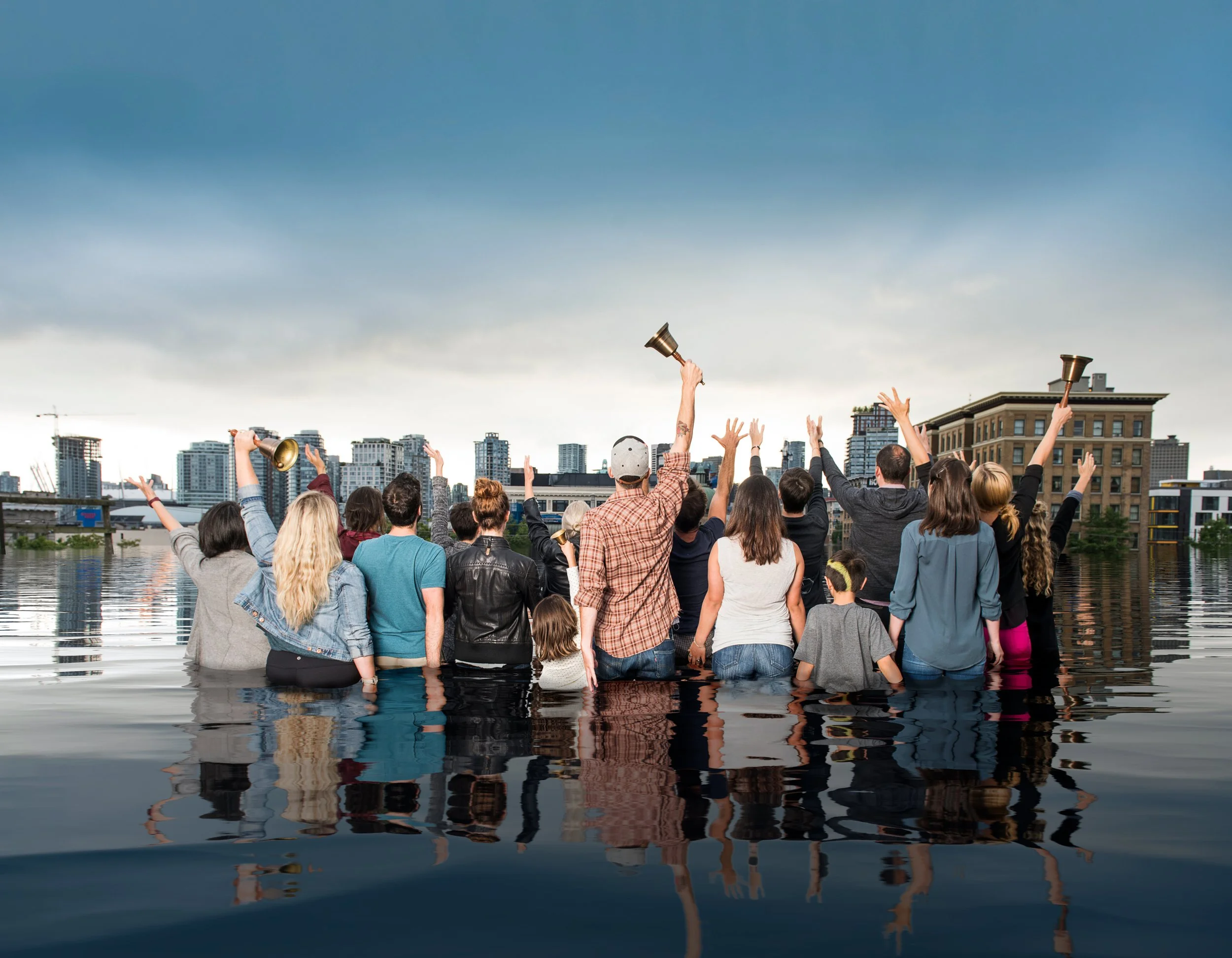Theatre Replacement's Town Choir sings in response to rising sea levels
The adaptation of the company’s acclaimed 2017 work relates to climate change as part of the City of Vancouver’s Sea2City Design Challenge
Town Choir. Photo by Emily Cooper
The City of Vancouver presents Town Choir by Theatre Replacement as part of the Sea2City Design Challenge on July 17 at 1 pm at Olympic Village Square
SEA-LEVEL RISE isn’t likely the first topic to come to mind upon mention of an epic choral work, but it’s at the very heart of an innovative upcoming performance by Vancouver’s Theatre Replacement. Diving into the pressing issue of climate change through the arts makes perfect sense, according to the organization’s co-founder and artistic director, Maiko Yamamoto.
Town Choir—which premiered in 2017 to critical acclaim and toured to the Dublin Fringe Festival, Mayfest in Bristol, and Theatre Orchard in Weston-super-Mare, also in the UK—has been adapted to speak to the state of the environment as part of the City of Vancouver’s Sea2City Design Challenge.
Here, four writers from four different coastal cities facing the shared challenge of climate change and rising sea levels will type out observations of the changing world unfolding around them. At that same moment, the Vancouver Youth Choir, situated in Olympic Village Plaza, will receive those observations via a large screen and will sing them out for all to hear.
The stats related to coastal flooding are staggering: In Vancouver, about 50 centimetres of sea-level rise are expected to occur in 30 years or so, while that’s expected to increase to one metre in around 80 years, according to the City. Over the longer term, Vancouver, like all coastal cities, will have to accommodate two metres of sea-level rise.
The texts will go deeper than merely addressing these sobering facts.
“For this iteration of the show, we’ve adapted a few sections to speak to sea-level rise specifically, but also our relationship to the sea and water and land and memory,” Yamamoto tells Stir. “There’s a section which asks the writers about what the nearest body of water to them will look like in 10 years and in 50 years.”
The international team of writers consists of Rosemary Georgeson (Vancouver), Ranjit Hoskote (Mumbai), Yuki Kedoin (Tokyo), and Tanya Marquardt (New York).
Directed by Yamamoto and composed and conducted by Robbie Blake, Town Choir (a sister project to another Theatre Replacement work called Town Criers) will be performed by the Vancouver Youth Choir under the artistic direction of Carrie Tennant.
Maiko Yamamoto. Photo by Stephen Drover
The Sea2City Design Challenge brings together two multidisciplinary teams over a 12-month period to guide urban development and ecological revitalization in the False Creek floodplain, a project that will also help support the City’s Climate Adaptation Plan and Vancouver Plan. Before and after the presentation of Town Choir, the City of Vancouver will showcase design ideas related to rising sea levels.
Yamamoto says the collaboration came about through a connection Theatre Replacement had with one of the planners involved; they had been trying to find a way to work together for some time.
“This project and this opportunity seemed like a really nice fit, and meant that we could bring something we already know works into a new and important context, which feels really good,” Yamamoto says.
As part of Theatre Replacement’s involvement in the Sea2City Design Challenge, the free event will also feature the citizen-led Sea2City Inter-generational Photo Project. It features photographs by seven pairs of participants who imagined themselves engaged in and adapting to activities that will be impacted by rising sea levels in and around False Creek.
The pairs worked with Theatre Replacement co-founder and associate artistic director James Long, photographer Liam Wake, and designer Stephanie Wong to compose professional photos based on their initial ideas. The works will be unveiled prior to the Town Choir performance and will be available for future viewing around the city.
“I think these artforms [choral singing and photography] have more capacity to connect with people on many levels: emotionally, intellectually, and also physically,” Yamamoto says. “As opposed to a lot of language and written information that is talking about sea level rise and climate change that can feel hard to process or overwhelming and depressing, these artforms have the potential to be expansive and to build meaning with the audience as well as hope. They can shift thinking on these issues.”















